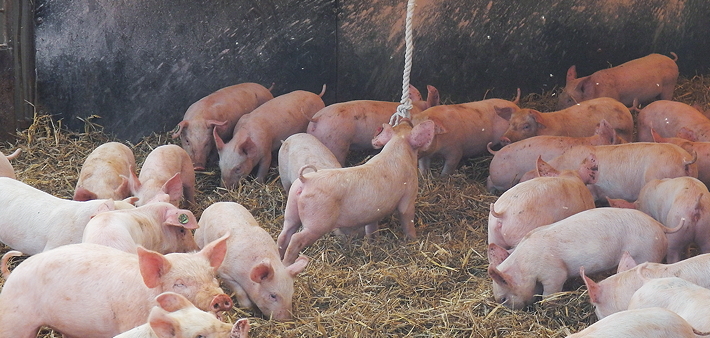Maisie Lord is a pig nutritionist for Cargill. Based in North Yorkshire, she worked at Cargill’s innovation centre in the Netherlands before joining the UK team
Big data is the buzz topic in many sectors. It’s used to describe data that contains greater variety, arriving in increasing volumes and with ever higher velocity.
And it’s something we’re now talking about in the pig industry, too. It does offer us great opportunities, but only if we can trust the accuracy of the information and it can be put to good use.
There’s no doubt there’s a lot of data around – every two days we, as a global population, create as much data as we did from the beginning of time until 2000.
This year has heralded scientific and technological advances in our own industry, such as pig face recognition in China, advanced 3D videoing to measure tail posture, and genetically engineered PRRS-resistant pigs. Through these advances and others we are generating more data through more advanced and accurate means.
However, the important thing to remember is that data isn’t of much use until it is interpreted. Equally as important is the reliability of this data. And are we maximising the use of the data we have?
For example, measuring growth rates in weaner accommodation allows us to make real time decisions on feeding and vaccination programmes. But is there more to be gained from the information we are gathering?
And should we question the data? Could we look more analytically at growth rate fluctuations in a six- to 12-month period, and can we see the pattern repeating itself each year? This could allow us to predict and foresee trends.
Any data we obtain needs to be replicable to make sure it is truly useful and accurate. We need to be equipped to continually assess a certain parameter in the same way. We can then gain an accurate, reliable picture over time.
Big data works on the principle that the more you know about anything or any situation, the
more reliably you can gain new insights and make predictions. By comparing more data points, relationships begin to emerge that were previously hidden, enabling us to make smarter decisions.
However, the more information you have, the more potential there is for a term I coin ‘noisy data’ – data that distracts us, and gets in the way of the more valuable information we need for decision- making. We need to be clear on what we are trying to achieve and sure to pick the data points that allow us to make a clear decision.
Essentially, the success of big data in the pig sector will depend on our ability to measure, apply and develop it into concepts and management strategies that are relevant to the challenges facing the sector today and in the future.
We need to take advantage of it but not let it get too big and end up as a distraction by diluting our focus from the key issues.




